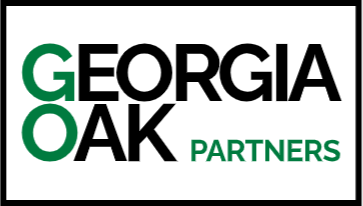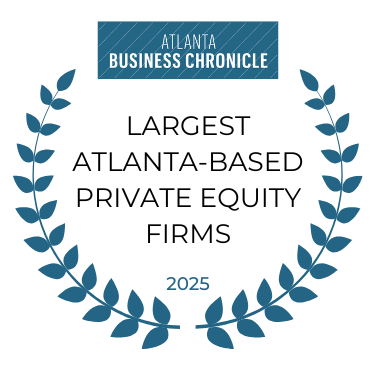Insights
Unlocking Knowledge: Explore Our Latest Insights
Stay at the forefront of industry trends, news, and insights with Georgia Oak Partners. Our 'Insights' section is a curated collection designed to provide you with valuable information and perspectives from our team. From official press releases announcing our latest endeavors to insightful videos and articles in the 'Oak Outlook', we're dedicated to keeping you informed and connected. Dive in to discover how we're shaping the future, honoring legacies, and forging impactful partnerships.
PRESS RELEASES BY DATE
List of Services
-
9/10/2025 Septic Blue Acquires A-1 Septic Services9/10/2025
-
8/14/2025 T Management Acquires Life Point Dental Group8/14/2025
-
3/31/2025 Artisan Custom Closets Acquires Carolina Closets Plus3/31/2025
-
10/25/2024 Georgia Oak Invests in T Management10/25/2024
-
10/14/2024 Georgia Oak Promotes Corey Clemons to Vice President10/14/2024
-
5/30/2024 Growth Expert Jeff Tankersley Joins Septic Blue as CEO5/30/2024
-
4/22/2024 Artisan Custom Closets Expands Reach with Acquisition of Chattanooga Closet Company4/22/2024
-
1/11/2024 Georgia Oak Sponsors M&A South1/11/2024
-
11/29/2023 David Walker Joins Georgia Oak11/29/2023
-
11/15/2023 Georgia Oak Partners Announces Strategic Acquisition of Septic Blue11/15/2023
-
10/4/2023 Aditi Further Expands its Technology Solution Services by Acquiring Resolvit10/4/2023
-
9/21/2023 Atlanta Braves legend Dale Murphy joins Georgia Oak Partners as Managing Director9/21/2023
-
7/11/2023 Corey Clemons Joins Georgia Oak7/11/2023
-
6/5/2023 Artisan Custom Closets Acquires Spacemakers and Carolina Closets6/5/2023
-
5/22/2023 Home Improvement Expert Lindsay Tillie Joins Artisan Custom Closets as CEO5/22/2023
-
1/30/2023 Stacy Sutton Joins Georgia Oak1/30/2023
-
12/22/2022 Georgia Oak Partners Invests in Artisan Custom Closets12/22/2022
-
12/6/2022 Georgia Oak Partners Adds Emerald Transportation Solutions to its Portfolio12/6/2022
-
1/6/2022 Lars Heck Joins Georgia Oak Partners1/6/2022
-
3/18/2021 GA Governor Kemp Announces Sailfish Expansion3/18/2021
-
3/16/2021 Georgia Oak Partners Invests in Aditi Consulting3/16/2021
-
12/22/2020 Georgia Oak Partners: Our History, Your Future12/22/2020
-
2/19/2019 Forbes Features Farm Burger Invasive Species Sandwich Launch2/19/2019
-
12/11/2018 Former Back Yard Burgers CEO Joins Your Pie as COO12/11/2018
-
10/11/2018 Spectrum Staffing Named Finalist for Pinnacle Small Business Awards10/11/2018
-
9/19/2018 Farm Burger Honored on Good Good 100 Restaurants™ List9/19/2018
-
9/18/2018 Georgia Oak Partners Founder Named to 2018 40 Under Forty by Atlanta Business Chronicle9/18/2018
-
8/19/2018 Georgia Oak Partners Founder Named to 2018 40 Under Forty by Atlanta Business Chronicle8/19/2018
-
7/25/2018 Your Pie Celebrates 10 Years with Franchise Fest, Contest7/25/2018
-
7/13/2018 Your Pie Named to Restaurant Business "Future 50" List7/13/2018
-
6/29/2018 Georgia Oak Partners Founder Named to 2018 Emerging Leaders by The M&A Advisor6/29/2018
-
5/16/2018 Farm Burger Named a "Sizzling Better-Burger Concept to Watch" by QSR Magazine5/16/2018
-
4/17/2018 QSR Magazine: Your Pie Opens 5 Locations in First Quarter4/17/2018
-
3/30/2018 Spectrum Staffing Wins Movers & Makers MVP Award3/30/2018
-
2/12/2018 Farm Burger Named to QSR Magazine's 40 Under 40 Units List2/12/2018
-
11/3/2025 Connor Smith Joins Georgia Oak11/3/2025
GO GROW VIDEO BY DATE
List of Services
-
7/11/2024 From Baseball to Business: Dale Murphy on Bobby Cox and Supportive Leadership7/11/2024
-
5/28/2024 From Baseball to Business: Dale Murphy on Leadership5/28/2024
-
1/4/2024 From Baseball to Business: "Swing Hard in Case You Hit It!"1/4/2024
-
10/4/2023 From Baseball to Business: Dale Murphy on His Role at Georgia Oak10/4/2023
-
9/27/2023 From Baseball to Business: Dale Murphy on Joining Georgia Oak9/27/2023
-
6/8/2023 GO Grow Value Creation Series: Multi-Unit and Manufacturing Spotlight6/8/2023
-
3/29/2023 GO Grow Value Creation Series: Home Services Spotlight3/29/2023
-
3/28/2023 GO Grow Value Creation Series: Manufacturing Spotlight3/28/2023
-
3/3/2022 GO Grow: Supply Chain & Logistics Update3/3/2022
-
12/15/2021 GO Grow: Consulting & Talent Management Focus12/15/2021
-
9/14/2021 GO Grow: Manufacturing Spotlight9/14/2021
-
9/8/2021 GO Grow: Consumer Marketing Spotlight9/8/2021
-
7/28/2021 GO Grow: Franchising Spotlight7/28/2021
-
6/21/2021 GO Grow: Supply Chain Spotlight6/21/2021
-
12/7/2023 From Baseball to Business: Dale Murphy on Resilience12/7/2023
OAK OUTLOOK ARTICLES BY DATE
List of Services
-
6/6/2025 How to Position Your Brand for Acquisition: A Marketing Playbook for Sellers6/6/2025
-
4/16/2025 Cultivating a Culture of Accountability and Empowerment4/16/2025
-
1/1/2025 Case Study: Preserving Legacy While Driving Growth through Minority Deals1/1/2025
-
5/20/2024 Georgia Oak Associate Job Description5/20/2024
-
3/4/2024 1851 Franchise: "Private Equity and Sports: The MVP Playbook"3/4/2024
-
9/21/2023 (Atlanta Business Chronicle) Atlanta Braves legend joins Georgia Oak Partners9/21/2023
-
2/3/2023 (Atlanta Business Chronicle) Slow, normal growth is the economic outlook for 2023: Atlanta financial experts discuss forecast in recent panel2/3/2023
-
4/11/2022 Can You Raise Prices in This Market? If Not, When?4/11/2022
-
12/18/2021 Putting People First12/18/2021
-
6/30/2021 Staffing Industry Insights6/30/2021
-
3/18/2021 Remote Work: A Permanent Part of Every Industry3/18/2021
-
2/4/2021 A Year of Growth: Focusing on Human Capital in 20212/4/2021
-
8/27/2020 COVID-19 Leadership with Page Siplon, CEO of TeamOne Logistics8/27/2020
-
8/27/2020 Culture Shifts During COVID-19 and Beyond8/27/2020
-
7/23/2020 Miked Up: Organizational Diversity - Volume 2, Part 17/23/2020
-
7/23/2020 Georgia & National Labor Market Trends: A Look at Six Key Industries7/23/2020
-
6/16/2020 Harnessing the Power of Technology6/16/2020
-
6/16/2020 Virtual Communication in Uncertain Times6/16/2020
-
5/27/2020 Miked Up: Volume 1, Part 15/27/2020
-
5/6/2020 Navigating the New Normal5/6/2020
-
5/6/2020 The Front Lines of Business Continuity5/6/2020
-
1/8/2020 Build Successful Teams with These 5 Elements1/8/2020
-
9/10/2019 Recruiting and Maintaining Manufacturing Talent9/10/2019
-
6/5/2019 Minority vs. Majority Deals6/5/2019
-
3/1/2019 Video Case Study: Sailfish Boats3/1/2019
-
11/28/2018 What Is Your Legacy?11/28/2018
-
4/5/2018 Navigating the Sale Process: From LOI to Post-Close4/5/2018
-
10/18/2016 Selling to Your Management Team10/18/2016
-
7/25/2025 Scaling with Intention: Growth Lessons from the Front Lines7/25/2025
At Georgia Oak, we’re committed to enhancing your business and helping founders grow their legacies
to their fullest potential. If you find we’re a good fit for your next step, please reach out to us.



